May 31, 2025 | 13:10 GMT +7
May 31, 2025 | 13:10 GMT +7
Hotline: 0913.378.918
May 31, 2025 | 13:10 GMT +7
Hotline: 0913.378.918
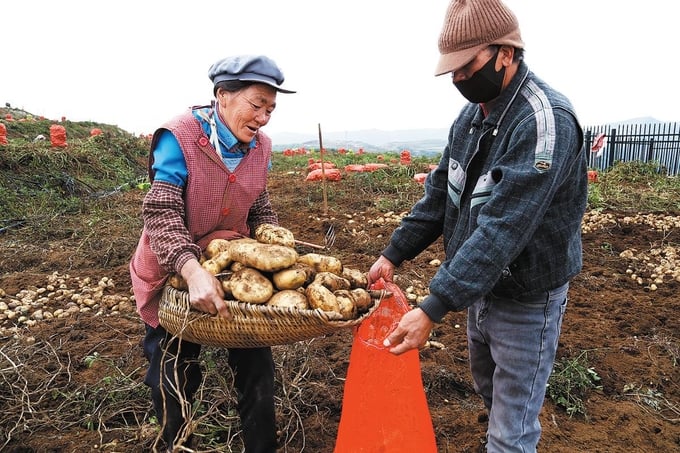
Farmers harvest potatoes in Qiaojia county, Zhaotong, Yunnan province, in October.
The production line started operation in November and has been running smoothly for about a month. The new product has the potential to turn potatoes, which have good yields and wide adaptability but a short storage life, into a popular staple food in China, thus helping the country bolster food security.
The production line in the city of Zhaotong, Yunnan, is the latest achievement of polymer chemist Wu Qi, an academician of the Chinese Academy of Sciences. He and his research team built the plant and put it into operation after more than five years of research and development.
Their processing technology changes the properties of potato starch, with the aim of making tuber crops a staple food in China and introducing the processing technology to the market.
Dining tables around the world feature various staples composed of starchy foods such as rice, wheat, potatoes and corn. However, most Chinese people do not view potatoes as a staple like rice and wheat, treating them more as a vegetable ingredient.
Agronomist Deng Yong, director of an agricultural service center in Qiaojia county, Zhaotong, said that changing the configuration of the potato starch results in food that is not as soft, and is therefore more appetizing to consumers, as well as having a longer shelf life.
The potato-turned-rice has been processed at high temperature and high pressure, so there is no need to wash and soak it. It can be cooked in an ordinary rice cooker, and the water and time required are far less than for rice, he added.
The mountainous city of Zhaotong is one of the main potato-producing areas in Yunnan, with a climate and environment very similar to the Andes Mountains in South America, where potatoes originally come from. The city was awarded the title of "Potato Plateau Seed Potato Capital of the World" by the World Potato Congress in 2020.
Zhaotong currently boasts a potato planting area of about 158,000 hectares, with an annual yield of 3.5 million metric tons and a total output value of about 10 billion yuan ($1.37 billion).
According to Li Yulin, the general manager of the company running the new production line, preliminary estimates show that 2.5 tons of potatoes can be processed into 1 ton of potato-turned-rice, resulting in output value increasing more than tenfold.
The production line is expected to process about 2,500 tons of fresh potatoes per year, producing 1,000 tons of potato-turned-rice, achieving an output value of about 30 million yuan, he added.
Deng said the processing technology is expected to promote potato planting in mountainous areas, as well as the planting and deep-processing of other crops, further adding to the industrial chain of mountain agriculture.
He added that potatoes can be planted in most parts of the country, while processing technology has big potential for assisting poverty alleviation efforts through sci-tech progress.
The first batch of products has already been put on trial sale in the local market, and feedback shows that middle-aged and elderly people are interested.
According to Wu, food security is based on three major elements: the area of arable land, the yield per unit area and strategic reserves. The potato-turned-rice has many advantages in these three areas, and can contribute to ensuring food security.
Compared to the average yield of 12 tons per hectare for rice, the potato yield can reach over 30 tons per hectare. Potatoes can be grown in various regions across China, including mountainous areas and plains, and have strong drought resistance.
In recent years, the sowing area of potatoes in China has remained around 4.67 million hectares, with an annual output of nearly 90 million tons and an output ranking first in the world for many years.
Official data shows that China's cumulative grain imports in 2023 stood at 161 million tons, while total grain output was 695 million tons.
During the annual Central Economic Work Conference held in December to outline priorities for the Chinese economy in 2025, Chinese leaders decided that efforts should focus on areas including the stable production and supply of grain and other major agricultural products, as well as the promotion of the agricultural industry according to local conditions to increase farmers' incomes.
Xinhua
/2025/05/29/5625-12-214801_567.jpg)
(VAN) Provincial mergers in the Mekong Delta promise to streamline administration, expand inter-provincial raw material areas, and foster close linkages in agricultural value chains, benefiting both businesses and cooperatives.
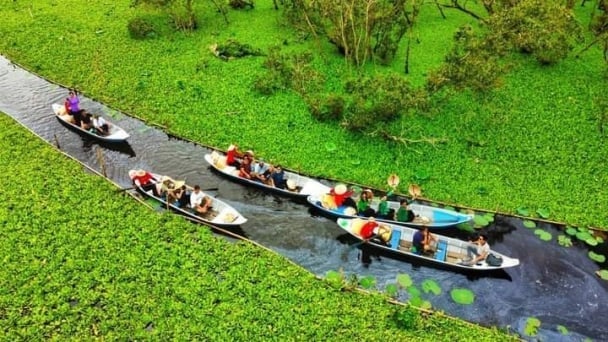
(VAN) Merging Mekong Delta provinces contributes to the expansion of agricultural raw material areas, addressing previous constraints caused by provincial boundaries. Additionally, this expansion will reduce costs and strengthen linkages between businesses, cooperatives, and farmers.
/2025/05/29/1043-2-153730_145.jpg)
(VAN) The Government's policy to merge provincial-level administrative units opens up major opportunities for the Mekong Delta region to reshape its agricultural development strategy toward large-scale production, effective regional linkages, and sustainability.
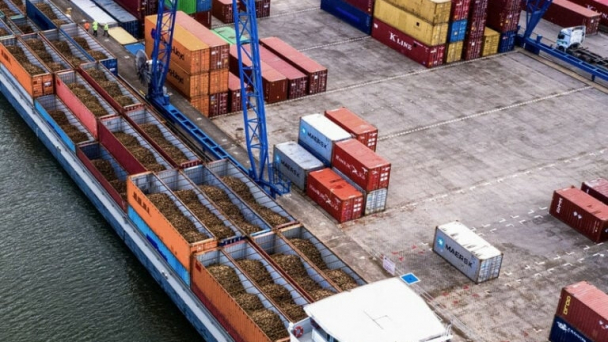
(VAN) The mutual export of agrifood products between the European Union (EU) and the United Kingdom (UK) must occur again without certification, border controls or other red tape. This was agreed at the UK-EU summit.
/2025/05/22/5121-2-173645_677.jpg)
(VAN) NBSAP Tracker identifies strengths and areas for improvement in the National Biodiversity Strategy, based on each region’s priorities and capacities.
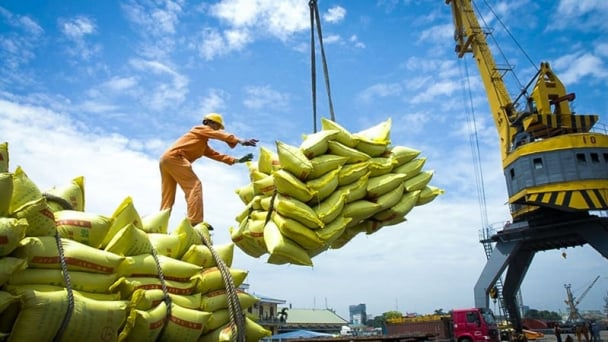
(VAN) The draft amendment to the Circular on rice export trading stipulates a periodic reporting regime for rice exporting enterprises.
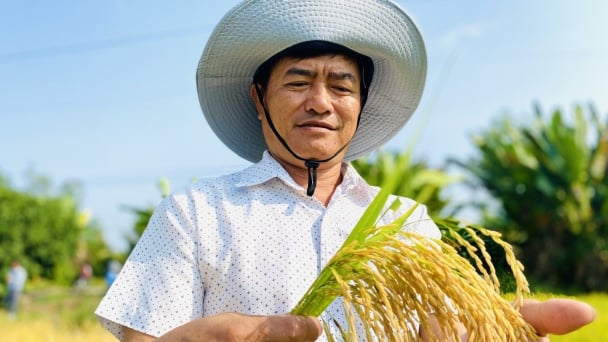
(VAN) Dong Thap farmers attained an average profit margin of 64% during the summer-autumn 2024 crop (first season), while An Giang and Kien Giang farmers followed with 56% and 54%, respectively.